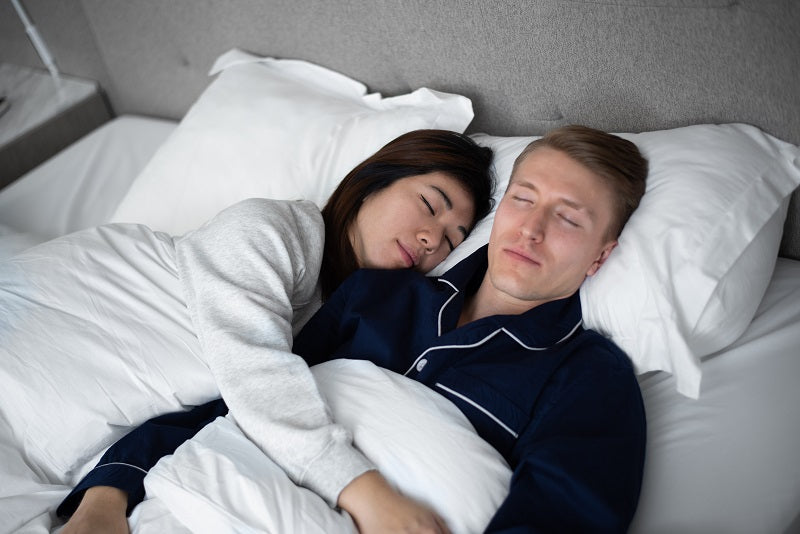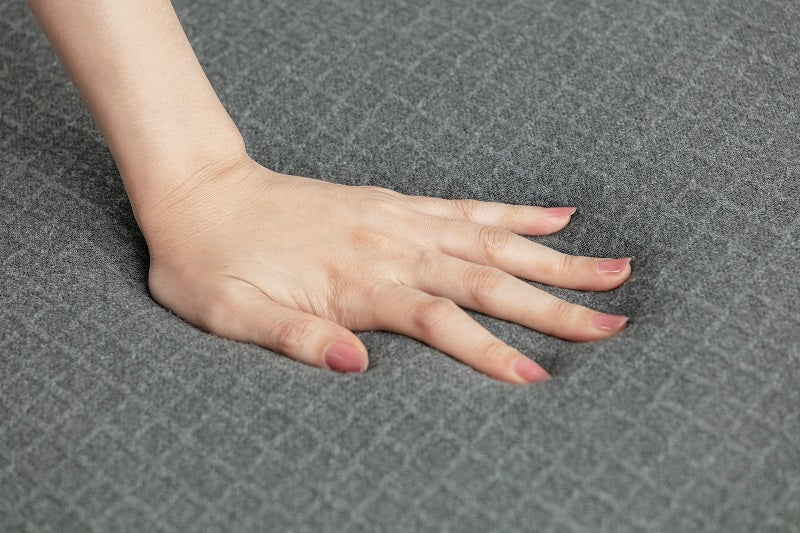Memory foam mattresses are known for their ability to conform to the body and provide pressure relief and support. However, they are also notorious for trapping heat and causing sleepers to feel hot and sweaty. This can affect the quality and quantity of sleep, as well as the health and well-being of the sleeper. Fortunately, there are advanced cooling technologies that can help regulate the temperature of memory foam mattresses and keep them cool and comfortable throughout the night. In this article, we will explore some of the most common and effective cooling technologies used in ergonomic memory foam mattresses, and how they work to improve the sleep experience.

What is Memory Foam and Why Does It Sleep Hot?
Memory foam is a type of polyurethane foam that has viscoelastic properties, meaning that it can change its shape and density in response to pressure and temperature. When a sleeper lies on a memory foam mattress, the foam softens and molds to the contours of the body, creating a personalized and comfortable sleeping surface. Memory foam can also reduce motion transfer, isolate noise, and align the spine and joints.
On the downside, memory foam also has some drawbacks, especially when it comes to temperature regulation. Due to the material’s closed-cell structure that limits airflow and ventilation, memory foam tends to retain heat. Moreover, it reacts to the body heat, which can further increase the temperature of the mattress. As a result, memory foam mattresses can aggravate the hot feeling, especially for people who are naturally hot sleepers, live in hot climates, or suffer from night sweats or hot flashes.

Is it bad to sleep hot?
Generally, yes. Sleeping hot can have negative consequences for the sleeper, such as:
- Disrupting the sleep cycle and reducing the amount and quality of deep and REM sleep stages, which are essential for physical and mental recovery and performance.
- Causing discomfort, irritation, and dehydration, affecting the mood, energy, and concentration of the sleeper.
- Increasing the risk of developing or worsening certain health conditions, such as insomnia, obesity, diabetes, cardiovascular diseases, and hormonal imbalances.
Therefore, it is important to find a memory foam mattress that can regulate the temperature and keep the sleeper cool and comfortable throughout the night.

What are the Cooling Technologies Used in Memory Foam Mattresses?
There are several cooling technologies that can be used in memory foam mattresses to improve their breathability and airflow, and to reduce their heat retention and absorption. Some of the most common and effective cooling technologies are:
Gel-infused foam
Gel-infused foam is one of the most popular cooling techniques used in memory foam mattresses, as it can provide a noticeable difference in the temperature and comfort of the mattress.
This is a type of memory foam that is infused with gel beads or particles, which can absorb and dissipate heat, and create a cooling sensation on the surface of the mattress. Gel-infused foam can also enhance the durability and support of the memory foam, as the gel can prevent the foam from sagging or losing its shape over time
Open-cell foam
Most memory foam mattresses today are made from so-called open-cell foam, as it can improve the breathability and airflow of the mattress. This type of material has a more porous and flexible structure, which allows more air to circulate through the foam and prevent heat build-up. Open-cell foam can also provide a more responsive and bouncier feel, which can make it easier to move and change positions on the mattress.

Convoluted foam
Convoluted foam has a wavy or egg-crate shape, which creates channels and pockets of air within the foam. This foam can increase the surface area and ventilation of the memory foam and reduce the contact between the foam and the sleeper, providing more cushioning and pressure relief, as it can conform to the curves and contours of the body. Convoluted foam is often used as a transition or base layer in memory foam mattresses, as it can enhance the cooling and comfort of the mattress.

Perforated foam
Small holes or perforations throughout this type of foam allow air to flow in and out of the foam, reducing foam density and firmness and making it softer and plusher. Perforated foam can be used as a top or comfort layer in memory foam mattresses, as it can create a cooler and more comfortable sleeping surface.
Phase change materials (PCMs)
These are materials that can change their physical state from solid to liquid, or vice versa, depending on the temperature. PCMs can absorb or release heat as they change their state and maintain a consistent and optimal temperature for the sleeper, and they can be infused into the memory foam, or used as a coating or a cover for the mattress. PCMs can provide a more advanced and effective cooling technology, as they can actively regulate the temperature of the mattress, rather than just passively dissipate heat.
How to Choose a Cooling Memory Foam Mattress?
When choosing a cooling memory foam mattress, there are several factors to consider:
- The type and amount of cooling technology
Different cooling technologies can have different levels of effectiveness and durability, and some may work better for certain sleepers than others. For example, gel-infused foam may be more suitable for warm sleepers who need more cooling, while open-cell foam may be more suitable for neutral sleepers who prefer more breathability. Moreover, the amount of cooling technology can also affect the temperature and comfort of the mattress. Let’s say, a mattress that has multiple layers of cooling foam, or a thicker layer of PCM, may be more cooling than a mattress with a thinner PCM layer and one layer of cooling foam.
- The firmness and thickness of the mattress
The firmness and thickness levels can also affect the temperature and comfort of the mattress, as they can influence the amount of sinkage and hug that the sleeper experiences. Generally, a firmer and thinner mattress can sleep cooler than a softer and thicker mattress, as it can provide more support and less contouring, and prevent the sleeper from sinking too deep into the mattress and feeling trapped by the heat. However, the firmness and thickness of the mattress should also match the sleeper's weight, sleeping position, and personal preference, as they can affect the pressure relief and alignment of the mattress.

- The cover and accessories of the mattress
The cover and accessories of the mattress, such as the sheets, pillows, and mattress protectors, can also affect the temperature and comfort of the mattress, as they can add or remove layers of insulation and ventilation. Typically, a breathable and moisture-wicking natural fiber bedding can sleep cooler than thick ones, as they can allow more air to flow through the mattress and keep the sleeper dry and cool. However, the cover and accessories of the mattress should also be comfortable and durable, as they can affect the quality and longevity of the mattress.
FAQ
How does gel-infused memory foam help in regulating sleep temperature?
Gel-infused memory foam helps in regulating sleep temperature by distributing heat away from the body. The gel particles infused in the foam increase air circulation, leading to a cooler sleeping surface. This prevents the foam from retaining too much heat and creating a hot and stuffy environment for the sleeper.
What are the benefits of a ventilated foam design in a mattress?
A ventilated foam design in a mattress allows for better airflow, which helps dissipate heat and moisture. The foam has small holes or channels that create spaces for air to flow through. This enhances the breathability and moisture-wicking properties of the foam, keeping the sleeping surface cool and comfortable.
Can ergonomic memory foam mattresses improve sleep for hot sleepers?
Ergonomic memory foam mattresses can improve sleep for hot sleepers by contouring to the body’s shape while providing support and pressure relief. The foam adapts to the curves and contours of the body, creating a personalized fit that reduces pressure points and aligns the spine. This improves blood circulation and reduces tossing and turning, which can generate heat and disrupt sleep.
Wrapping Up
Luckily, with the help of advanced cooling technologies, such as gel-infused, open-cell, convoluted, perforated foam, and phase change materials, memory foam mattresses we can regulate the temperature and keep us cool and comfortable throughout the night. When choosing a cooling memory foam mattress, the sleeper should consider the type and amount of cooling technology, the firmness and thickness of the mattress, and the cover and accessories of the mattress, to find the best option for their needs and preferences. Read next how to properly clean your mattress and find out which mattress, firm or soft, is right for you.
sales@progressivebed.com | 1-800-828-9381
